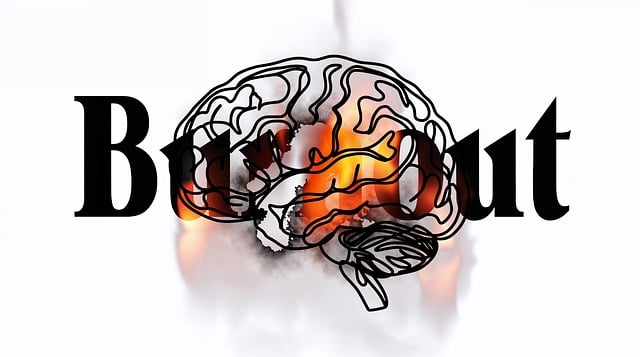Early intervention is key in supporting children with Autism Spectrum Disorder (ASD), focusing on communication, social interaction, and adaptive behaviors through tailored therapy. Public awareness campaigns play a vital role by educating communities, promoting early detection, providing crisis intervention guidance, and fostering neurodiversity to prevent depression among ASD children. Successful campaigns for Therapy for Young Children with ASD should:
1. Target unique challenges of young children on the spectrum.
2. Educate parents, caregivers, and educators about ASD.
3. Foster inclusive environments and implement strategies like Social Skills Training.
4. Reduce mental illness stigma and ensure effective handling of sensory sensitivities during therapy.
5. Engage diverse stakeholders, tailor messages to families' unique challenges, empower caregivers with informed tools, and involve communities in educational initiatives.
6. Measure success through quantifiable outcomes, contributing to destigmatization, empathy, early intervention, improved quality of life, and more inclusive communities.
Public awareness campaigns play a pivotal role in shaping societal understanding of complex conditions like Autism Spectrum Disorder (ASD) in young children. This article delves into strategies for creating impactful initiatives that facilitate early detection and access to therapy. We explore key components, including educating families, caregivers, and communities about ASD’s unique presentation and the importance of timely intervention. By examining successful campaigns and best practices in engagement, we aim to illuminate paths towards enhanced support systems for young children on the spectrum.
- Understanding Autism Spectrum Disorder (ASD) in Young Children
- The Impact of Public Awareness Campaigns
- Designing Effective Campaign Strategies
- Engaging Different Audiences: Families, Caregivers, and the Community
- Measuring Success and Long-Term Benefits
Understanding Autism Spectrum Disorder (ASD) in Young Children

Early intervention is key when it comes to understanding and supporting children with Autism Spectrum Disorder (ASD). By recognizing the unique challenges faced by young children on the spectrum, parents, caregivers, and educators can access valuable therapy options tailored to their needs. These therapies focus on developing essential skills for communication, social interaction, and adaptive behaviors, ensuring a strong foundation for their emotional well-being promotion techniques.
Autism awareness campaigns play a crucial role in educating communities about ASD’s diverse manifestations. They highlight the importance of early detection and provide crisis intervention guidance for families. Through these initiatives, society can foster an environment that embraces neurodiversity while offering necessary support for depression prevention among children with ASD.
The Impact of Public Awareness Campaigns

Public awareness campaigns play a pivotal role in shaping societal understanding and acceptance of various issues, including mental health concerns like Autism Spectrum Disorder (ASD). By highlighting the unique challenges faced by individuals on the autism spectrum, these campaigns foster empathy and promote early intervention. This is particularly crucial for young children with ASD, as early detection can significantly impact their therapy and overall development.
Through compelling narratives and accessible information, awareness initiatives teach the public about effective Mood Management and Self-Care Practices tailored to meet the needs of individuals with ASD. Furthermore, they emphasize the importance of Empathy Building Strategies, encouraging communities to create supportive environments where diversity is celebrated and inclusion becomes the norm.
Designing Effective Campaign Strategies

In designing effective public awareness campaigns for Therapy for Young Children with Autism Spectrum Disorder (ASD), it’s crucial to understand the target audience and their specific needs. Campaigns should aim to educate parents, caregivers, and educators about the unique challenges faced by young children on the autism spectrum, fostering an inclusive environment that supports their development. Incorporating strategies like Social Skills Training can significantly enhance the impact, as these programs teach essential communication and interaction skills, reducing social isolation often experienced by autistic children.
A well-structured campaign must also address Mental Illness Stigma Reduction Efforts to create a supportive community. This involves sharing success stories, highlighting the diversity of experiences within the ASD community, and promoting understanding through open dialogue. Risk Assessment for Mental Health Professionals is another critical aspect, ensuring that those providing therapy are equipped to handle the sensory sensitivities and communication differences that may arise during treatment. By integrating these elements, awareness campaigns can effectively dispel myths, encourage early intervention, and ultimately improve the lives of young children with ASD.
Engaging Different Audiences: Families, Caregivers, and the Community

Creating effective public awareness campaigns about therapy for young children with Autism Spectrum Disorder (ASD) requires engaging diverse audiences, including families, caregivers, and community members. Families play a pivotal role in early intervention and support, making it crucial to tailor messages that resonate with their unique challenges and hopes. Caregivers, often the primary providers of therapy, need information that empowers them to make informed decisions and effectively communicate with healthcare professionals.
Community involvement is equally vital for fostering understanding and acceptance. Public awareness campaigns should incorporate strategies for building empathy among community members, addressing misconceptions about ASD through educational initiatives, and promoting cultural sensitivity in mental healthcare practice. By considering the perspectives and needs of these varied groups, campaigns can enhance accessibility to resources, advocate for improved mental health policy analysis and advocacy, and ultimately support the holistic development of young children with ASD.
Measuring Success and Long-Term Benefits

Measuring the success of public awareness campaigns is paramount to understanding their impact on society. When focusing on therapeutic interventions like those aimed at Autism Spectrum Disorder (ASD) in young children, quantifiable outcomes are essential. Success can be gauged through various metrics such as increased service utilizations, improved community acceptance, and enhanced emotional regulation among affected individuals. Mental wellness podcast series production often incorporates these campaigns to provide platforms for sharing valuable insights and strategies for managing conditions like ASD-related anxiety relief.
Over time, well-structured awareness initiatives translate into long-term benefits for various stakeholders. They contribute to the destigmatization of mental health issues, foster empathy, and encourage early intervention. By promoting emotional regulation techniques, these campaigns empower both children with ASD and their caregivers, enhancing overall family dynamics. This holistic approach not only improves quality of life but also paves the way for more inclusive communities where everyone has access to necessary therapy and support.
Public awareness campaigns play a pivotal role in educating communities about conditions like Autism Spectrum Disorder (ASD) in young children. By utilizing strategic designs, engaging diverse audiences, and measuring success, these initiatives can foster understanding, reduce stigma, and enhance access to essential therapies for young children with ASD. Investing in well-crafted public awareness efforts is a step towards creating an inclusive society that better supports the unique needs of children on the autism spectrum.












